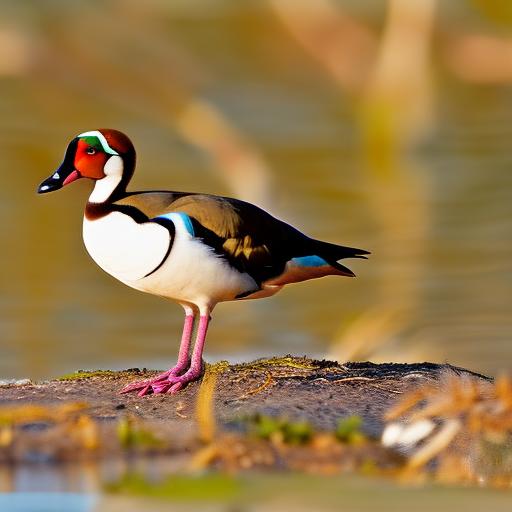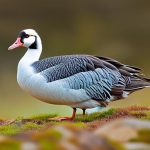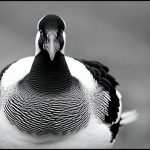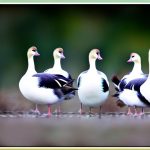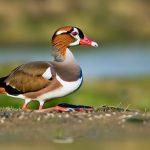The Egyptian goose (Alopochen aegyptiaca) is a species of waterfowl native to Africa, particularly in the Nile Valley and sub-Saharan regions. These geese are known for their striking appearance, with distinctive markings and vibrant colors. One of the most fascinating aspects of Egyptian geese is their breeding plumage, which plays a crucial role in their reproductive behavior and success. In this article, we will explore the importance of breeding plumage in Egyptian geese, from its stunning colors and patterns to its role in attracting mates and ensuring reproductive success. Understanding the significance of breeding plumage in these birds sheds light on the evolutionary and behavioral aspects of this species, as well as its conservation implications.
The Importance of Breeding Plumage
Breeding plumage is a set of feathers that birds develop during the breeding season, typically characterized by vibrant colors, intricate patterns, and ornate displays. This specialized plumage serves several important functions, including attracting mates, establishing dominance, and signaling readiness for reproduction. In the case of Egyptian geese, breeding plumage is a key component of their courtship and mating rituals, as well as their overall reproductive success. The stunning colors and patterns of male breeding plumage play a crucial role in the species’ behavior and evolutionary history, making it a fascinating subject for study and appreciation.
The Stunning Colors and Patterns of Male Breeding Plumage
Male Egyptian geese are known for their striking breeding plumage, which features a combination of rich, earthy tones and intricate patterns. During the breeding season, their feathers take on a glossy sheen, with shades of chestnut, copper, and iridescent green. The intricate patterns on their wings and body create a mesmerizing display, especially when the sunlight catches their feathers. The contrast between the bold colors and subtle markings makes male Egyptian geese stand out in their natural habitat, drawing attention to their presence and signaling their reproductive readiness. The stunning colors and patterns of male breeding plumage not only serve as a visual spectacle but also play a crucial role in the species’ courtship and mating behavior.
How Male Egyptian Geese Display Their Breeding Plumage
Male Egyptian geese showcase their breeding plumage through a series of elaborate displays and behaviors designed to attract potential mates and establish their dominance. One of the most common displays is the “head-up” posture, where males stretch their necks and raise their heads to show off their vibrant plumage. This posture not only highlights their colorful feathers but also emphasizes their physical stature and overall health. Additionally, male Egyptian geese engage in ritualized movements, such as wing-flapping and tail-raising, to further accentuate their breeding plumage and capture the attention of females. These displays are often accompanied by vocalizations and calls, creating a multi-sensory experience that enhances the impact of their breeding plumage.
The Role of Breeding Plumage in Attracting Mates
Breeding plumage plays a crucial role in attracting mates for male Egyptian geese, as it serves as a visual cue for females to assess their potential partners. The vibrant colors and intricate patterns of male breeding plumage signal genetic fitness, overall health, and reproductive readiness, making them highly desirable to females seeking suitable mates. In the competitive world of courtship and mating, male Egyptian geese use their breeding plumage to stand out from other males and capture the attention of females. The visual impact of their plumage, combined with their displays and behaviors, creates a compelling courtship strategy that increases their chances of attracting mates and successfully reproducing.
The Significance of Breeding Plumage in Egyptian Geese Behavior
Breeding plumage has a significant impact on the behavior of Egyptian geese, influencing their courtship rituals, social interactions, and reproductive success. Male geese invest considerable time and energy in maintaining and displaying their breeding plumage, as it directly affects their ability to attract mates and secure breeding opportunities. The presence of vibrant colors and intricate patterns in their plumage enhances their visual appeal and signals their reproductive fitness, leading to increased attention from potential mates. Additionally, the display of breeding plumage is often accompanied by vocalizations and physical movements, creating a multi-modal courtship strategy that maximizes the impact of their plumage and increases their chances of successful mating.
The Evolution of Breeding Plumage in Egyptian Geese
The evolution of breeding plumage in Egyptian geese is a fascinating subject that sheds light on the species’ reproductive strategies and ecological adaptations. Over time, the development of vibrant colors and intricate patterns in male breeding plumage has been shaped by natural selection, as it confers a competitive advantage in courtship and mating. Males with more elaborate and visually striking plumage are more likely to attract mates and successfully reproduce, passing on their genetic traits to future generations. This process has led to the evolution of breeding plumage as a key component of the species’ reproductive behavior, reflecting the interplay between ecological pressures and sexual selection in shaping the appearance and behavior of Egyptian geese.
The Relationship Between Breeding Plumage and Reproductive Success
The relationship between breeding plumage and reproductive success in Egyptian geese is a critical aspect of their evolutionary and behavioral ecology. Males with vibrant colors and intricate patterns in their breeding plumage are more successful in attracting mates and securing breeding opportunities, leading to higher reproductive success. The visual impact of their plumage, combined with their displays and behaviors, enhances their courtship effectiveness and increases their chances of successful mating. As a result, males with more elaborate and visually striking breeding plumage are more likely to pass on their genetic traits to future generations, contributing to the persistence and evolution of these traits within the population.
Conservation Implications of Breeding Plumage in Egyptian Geese
The conservation implications of breeding plumage in Egyptian geese are significant, as they highlight the importance of preserving the species’ natural habitats and reproductive behaviors. The development and display of breeding plumage are closely linked to the availability of suitable breeding grounds, food resources, and nesting sites, all of which are essential for the species’ reproductive success. Human activities such as habitat destruction, pollution, and hunting can disrupt these critical factors, leading to a decline in breeding plumage quality and reproductive success among Egyptian geese populations. By understanding the significance of breeding plumage in the species’ behavior and ecology, conservation efforts can be targeted towards protecting their natural habitats and promoting sustainable management practices that support their reproductive needs.
Appreciating the Beauty and Significance of Male Breeding Plumage in Egyptian Geese
In conclusion, the breeding plumage of male Egyptian geese is a remarkable and significant aspect of their biology, behavior, and evolutionary history. The stunning colors and intricate patterns of their plumage play a crucial role in attracting mates, establishing dominance, and ensuring reproductive success. The evolution of breeding plumage reflects the interplay between ecological pressures and sexual selection, shaping the appearance and behavior of Egyptian geese. Understanding the conservation implications of breeding plumage highlights the importance of preserving the species’ natural habitats and reproductive behaviors. By appreciating the beauty and significance of male breeding plumage in Egyptian geese, we can gain a deeper understanding of their ecological role and contribute to their conservation and management.
Meet Walter, the feathered-friend fanatic of Florida! Nestled in the sunshine state, Walter struts through life with his feathered companions, clucking his way to happiness. With a coop that’s fancier than a five-star hotel, he’s the Don Juan of the chicken world. When he’s not teaching his hens to do the cha-cha, you’ll find him in a heated debate with his prized rooster, Sir Clucks-a-Lot. Walter’s poultry passion is no yolk; he’s the sunny-side-up guy you never knew you needed in your flock of friends!

